Sko Abbey (Swedish: Sko kloster), was a Cistercian nunnery in Sweden, in operation from 1230 until at least 1588. It was located in the Skokloster parish in Uppland. It was the predecessor of the baroque Skokloster Castle.
Contents


Sko Abbey (Swedish: Sko kloster), was a Cistercian nunnery in Sweden, in operation from 1230 until at least 1588. It was located in the Skokloster parish in Uppland. It was the predecessor of the baroque Skokloster Castle.


Sko monastery was founded around 1230 by Knut Långe. Byarums monastery was relocated to Sko in 1236. Sko Abbey was founded because an already existing convent, Byarum Abbey, which was founded in about 1170, was moved from Vaggeryd Municipality to Sko in the 1230s.
Sko Abbey seem to have functioned as a school for daughters of the nobility, and the nuns often came from noble families. In 1520, the sister of Gustav I of Sweden, Margareta Eriksdotter Vasa, was given refuge there during the Stockholm Bloodbath.
During the Swedish Reformation in 1527, the Abbey was banned from accepting novices and its assets was confiscated by the crown in accordance with the Reduction of Gustav I of Sweden. The members were free to leave or to remain supported by an allowance from the estates formerly belonging to the Abbey. In 1566, these rights were confirmed, at which point the nuns were apparently still managing their school for daughters of the nobility. In 1577, only two nuns remained, and the last allowance to a nun of the Sko Abbey is recorded from 1588. After the Reformation, the monastery seems to have functioned as a girls' school and as a retirement home for older women.
The building of the abbey itself was torn down in 1574. In the early 1600s, King Charles IX donated the property to the then 27-year-old Herman Wrangel as a reward for services rendered. His son Carl Gustaf Wrangel had Skokloster Castle built on the site in 1654–1676. Skokloster Church (Skoklosters kyrka) is used as the church of Skokloster Castle. [1]
The abbesses are only partially known.
Eric Trolle was elected regent of Sweden in 1512, during the era of Kalmar Union. He was Justiciar of Närke and a Lord High Councillor of Sweden from 1487.

Canute II the Tall, was King of Sweden from 1229 until his death in 1234. He was the father of Holmger Knutsson, a later pretender for the Swedish throne. Both father and son were members of the House of Folkung (Folkungar).
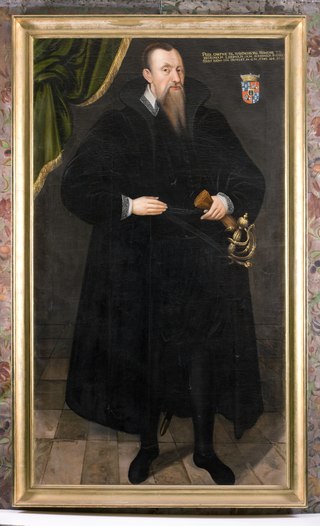
Per Brahe the Elder (1520–1590) was a Swedish statesman.

The Abbey Pax Mariae, more commonly referred to as Vadstena Abbey, situated on Lake Vättern in the Diocese of Linköping, Sweden, is a monastery of nuns within the Bridgettine Order. It was active from 1346 until 1595 and has been active since 1963, regaining statues as an autonomous abbey in 1991.
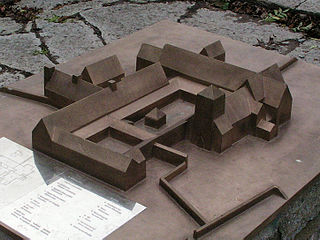
Vreta Abbey, in operation from the beginning of the 12th century to 1582, was the first nunnery in Sweden, initially Benedictine and later Cistercian, and one of the oldest in Scandinavia. It was located in the present-day municipality of Linköping in Östergötland.
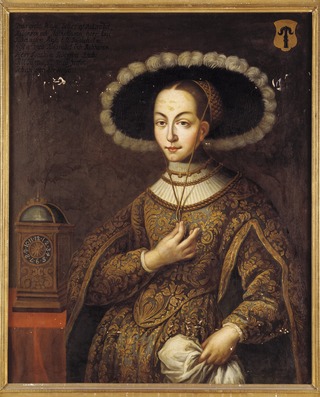
Margareta Eriksdotter Vasa, also called Margareta Vasa and Margareta of Hoya, was a Swedish noblewoman, sister of king Gustav I of Sweden. Between 1525 and 1534, she commanded Vyborg Castle on several occasions during the absence of her spouse.

Vårfruberga Abbey, previously Fogdö Abbey was a Cistercian monastery of nuns from the 12th century until 1527, situated 1 mile north-west of Strängnäs on the Fogdö peninsula in Lake Mälaren, formerly a parish, in Södermanland, Sweden.
Barbro Eriksdotter Bielke, known in history as Barbro Påle and Fru Barbro på Brokind was a Swedish noble and landowner. She is known as the subject of a ghost story, in which she is claimed to haunt Brokind Castle. She is also known as one of the likely historical role models behind the legend of Pintorpafrun, a stereotypical cruel lady of the manor who tortures and mistreats her subordinates and haunts the place of her cruelty after her death. She reputed to be cruel toward her tenants and rumored to be a witch. Another person pointed out as the historical person behind pintorpafrun was Anna Karlsdotter (Vinstorpa).
Anna Karlsdotter (Vinstorpa) (died 1552), was a Swedish noble and landholder. By her daughter Ebba Eriksdotter Vasa, she was the maternal grandmother of Queen Margaret Leijonhufvud and thereby great-grandmother of King John III of Sweden and King Charles IX of Sweden. She is remembered as one of several possible people later identified with the famous legend of Pintorpafrun.
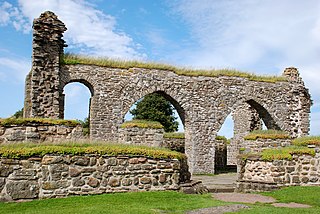
Gudhem Abbey is the ruin of a nunnery which was in operation from 1152 to 1529. It is located in Gudhem outside Falköping in the Falbygden area in Västergötland, Sweden. It was initially part of the Benedictine and later Cistercian order. It is considered to have been one of the oldest convents in Sweden; after Vreta Abbey (1100) and Alvastra Abbey (1143).
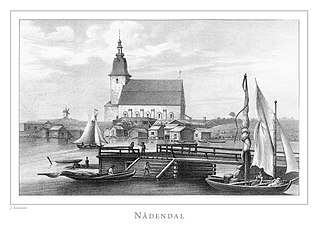
Nådendal Abbey, was a Bridgettine abbey in then-Swedish Finland, in operation from 1438 to 1591. The abbey was first situated in Masku, secondly in Perniö (1441) and finally in Naantali in 1443. It was one of six monasteries in Finland during the Middle Ages, and, as a double monastery, the only one which accepted women.
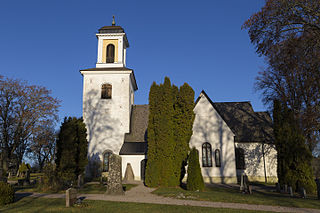
Alsike Church is a Lutheran church at Alsike in Uppsala County, Sweden. It lies in Knivsta Municipality, a suburb to Stockholm. The church is associated with the Archdiocese of Uppsala of the Church of Sweden.

Riseberga Abbey, was a Cistercian nunnery in Sweden, in operation from circa 1180 until 1534. It was located near Fjugesta in Närke. It had the right to appoint the vicar of the Edsberg parish, which was under the jurisdiction of the abbey. The ruins of the buildings are preserved, and the Amphitheatre of the abbey are presently used as a Sylvan theater.

Skänninge Abbey, also known as St. Ingrid's Priory, St. Martin's Priory or Skänninge Nunnery, was a Roman Catholic convent for females of the Dominican Order in Skänninge in Sweden, in operation from 1272 until 1544. It was founded by Saint Ingrid of Skänninge, and the center of her cult, and as such, it was often referred to as St. Ingrid's Priory. Located near the church dedicated to Martin of Tours, it was originally named St. Martin's Priory, though this name was rarely used in practice. The common name for it was Skänninge Abbey, but as there was also a convent for male members of the Dominican Order in Skänninge, it was often called Skänninge Nunnery to separate it from the male monastery.
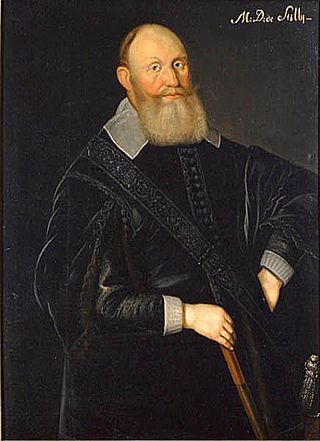
Events from the year 1574 in Sweden
Valborg Joakimsdotter Fleming was a Finnish abbess. She was the abbess of Nådendal Abbey in 1526–1531.
Marienbrunn Abbey also called Fons Mariae and Triumphus Marie was a double convent for women and men of the order of the Bridgettines, situated in Gdańsk between 1391 and 1833. It was the first convent of the order founded outside of Sweden, and the second convent of the order altogether.
Karin Johansdotter, was a Swedish Roman Catholic nun of the Bridgettine Order. She was the last nun in Sweden after the Swedish Reformation.